Cases
The big climate database was launched on the 1st of February 2021, and the data has been well applied ever since. During the two years, the website denstoreklimadatabase.dk has had around 180.000 users, and 650.000 site views, and the download-version of the database has been downloaded more than 6.000 times. CONCITO has been awarded with the 2021 Nordic Council Environment Prize for the project's huge potential to change behaviours.
This site is a collection of cases and examples of different applications, gathered to showcase how the database can be used. We present examples of companies, who have used the data to calculate a general impact of consumers’ grocery shopping, calculation of meals and recipes. Websites have been created where the consumers themselves can calculate the climate impact of their groceries or their meals. Educational material has been created for the students in the 7th-9th grade of the Danish primary school. And further, a suggestion of a climate label has been tested in grocery stores.
There are many other ways to use the database, and we are well aware that there are many other examples that we have not noticed yet. Therefore, please let us know, if there are other cases based on the climate database that should be a part of the collection.
Meyers climate strategy
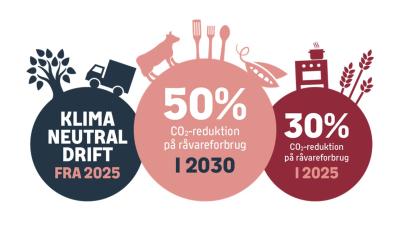
Meyers launched a comprehensive climate strategy with ambitious climate reduction targets. Approximately 95% of the total climate footprint in Meyers comes from the consumption of produce. As such, they aim to reduce their climate footprint from raw produce by 30% per kg of food in 2025 and 50% per kg of food by 2030, with 2018 as a starting point. In collaboration with Jannick Schmidt and 2.-0 LCA consultants, the life cycle assessments for Meyers’ consumption of produce are based on the same method and underlying data as The Big Climate Database. In addition, they map the imprint on biodiversity and a wide range of other environmental parameters.
Netto’s climate label test

Based on The Big Climate Database, Netto has tested a climate label scheme called Skyen (the Cloud). In hope of making it easier for consumers to do their grocery shopping with a lower carbon footprint, Netto has tested this climate label in their shops. They completed the test in two of their store, Netto Kongelundsvej in Copenhagen and Bygholm Bakker in Horsens. The purpose of the test was to gather experience that can contribute to having a standard national climate labeling for the food trade industry.
Information on the climate footprint of food categories in Dansk Cater’s webshops
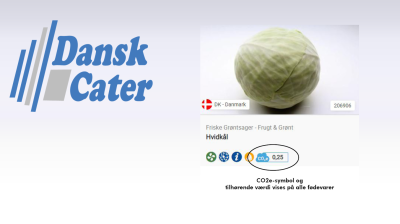
Dansk Cater has introduced information on the climate footprint of food categories on their webshops at AB Catering, BC Catering and Inco Cash & Carry, so the professional kitchens get a general understanding of the climate footprint of their orders. Dansk Cater describes it as only a cautious suggestion, but it comes from many inquiries from their costumers, who wants to be able to see how much CO2 is emitted from the individual products. Dansk Cater are questing a government-controlled database. They have based their numbers on the big climate database, as it is the first public available database with uniform, detailed and transparent calculations of an average climate footprint - at the time being.
Educational material about food and the climate
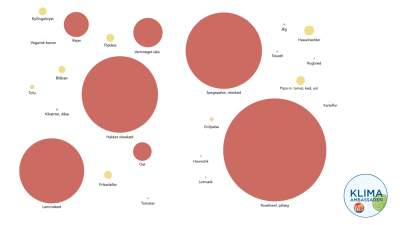
CONCITO's Climate Embassy has developed educational material about food and climate. It can be used to educate and empower students in the older classes of the Danish primary school and provide a broader understanding of the subject through a solution-based approach. The material targets the primary schools' 7th-9th grades and is interdisciplinary material, which can be applied in geography, biology, math, social studies, and cooking class. The material was created to target the 7th-9th grade. However, it has a great potential to provide information to anyone interested in the subject of food and the climate.
Føtex' Green Score
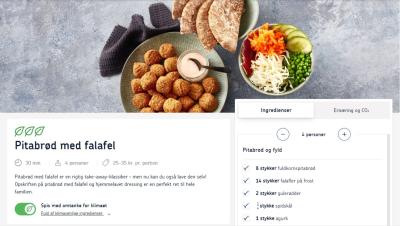
Føtex is contributing to making it easier to eat with consideration of the climate by having calculated different versions of well-known recipes, with a reduced climate footprint. To provide an overview of how green the dish is, Føtex has introduced Grøn Score (Green Score). The three leaves on the recipe indicate the climate footprint. If all three leaves are green, the dish has a relatively low footprint, whereas three grey leaves show a high footprint. The green score represents the CO2e-imprint per portion of the recipe and is calculated partly from data from the big climate database.
DABBA’s menu planning
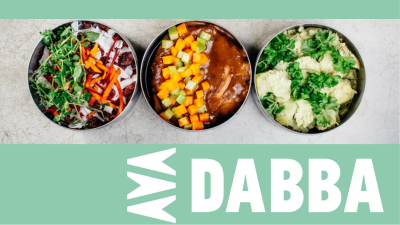
The catering company, DABBA, offers corporate catering with lunch menus based on The Big Climate Database. They have made four menus: The Classical, The Varying, The Vegetarian and The Vegan. Based on the climate database, DABBA has decided not to use the food categories with the highest climate footprint in their menus. They recommend their green menus, though they still offer meat in some menus. Additionally, DABBA accounts for their costumers’ orders to provide an overlook of the corporate lunches and their climate impact distributed on food categories.
The Climate Label
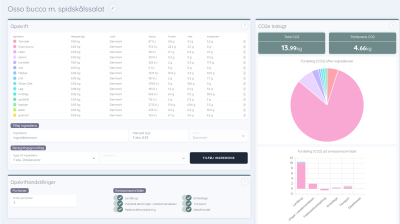
The Climate Label has developed a website where you can calculate the climate footprint of recipes. The website facilitates reducing the footprint of food consumption by providing an overview of the climate footprint of the food categories of recipes. This product targets private households, restaurants, cafés, canteens and producers to provide an informed foundation for consumption. The calculations are based on the big climate database’s results and is being updated to follow new versions of the database. The website will save an overview of the user’s recipes and the average emission and, at the same time, offers inspiration for new dishes.
CO2-calculator
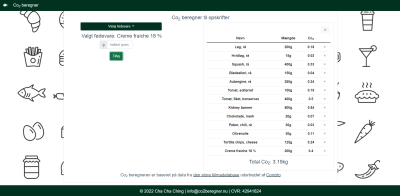
CO2beregner.dk is a straight forward and intuitive calculator to realize the climate impact of recipes and food. The calculator is created for anyone who wishes to know the impact certain food types has on the climate, and it is free to use, without having to sign-up to an account. More functions will be added to the site. In the future it will be possible to scan recipes. The site will further recommend suitable alternatives with a lower climate impact to the entered ingredients with a high climate impact. The CO2-calculator is updated with results from the Big Climate Database version 1.1.
Climate calculations in the LOCA Group
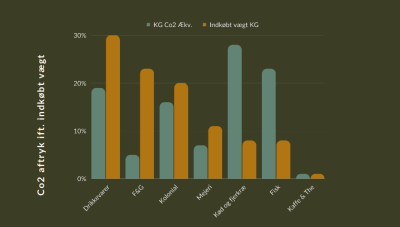
In March 2022 the LOCA Group published their first sustainability report. The report presents an analysis of the group’s consumption behavior, where purchases of goods and services are registered. A central part of the yearly reporting is the calculations of the climate impact. The LOCA group applies The big climate database to calculate the climate impact of all their purchases of food and beverages for their quarterly CO2-accounting. The LOCA Group further uses the database to calculate the climate impact of menus and dishes, which makes it possible to rethink the recipes and try new ingredients with a lower climate impact, while upholding the standard of taste and quality.
MAD (food) 11 great recipes
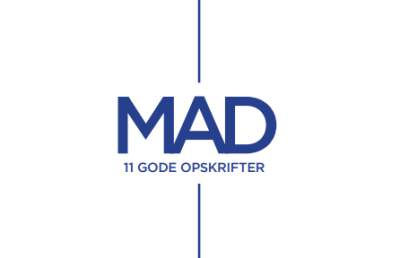
CONCITOs youth platform, GRO SELV and the Climate Embassy have published a collection of 11 great recipes, where the carbon footprint of each recipe is calculated based on The big climate database. The collection of recipes is a part of the project on social forces and barriers for climate-friendly diets, which is a collaboration between CONCITO and the Department of Sociology at the University of Copenhagen.
The planetary cookbook

The planetary cookbook is a collection of simple and delicious recipes which complies with the planetary boundaries. It is a guide for eating climate-friendly, created by food lovers who believe that passion for food and climate awareness go together. The climate footprints of the recipes are calculated based on The big climate database and the emission limits are based on the commission report Food in The Anthropocene: the EAT-Lancet Commission on Healthy Diets From Sustainable Food Systems.
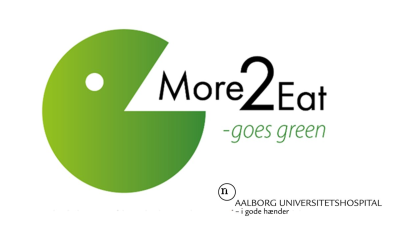
Through the project More2Eat goes green Kulinarium, a research- and development unit in nutrition, food and meals anchored in the kitchen department at Aalborg University Hospital, has assigned climate footprints of all the food categories that is used in the production of meals and catering for the patients and staff at Aalborg UH. The data and emission factors used in this project is from the big climate database. The food categories, which are already represented in the big climate database, has been assigned their respective emission factor. The food categories, which are not yet represented in the big climate database, has been assessed and compared to the existing food categories in the database, based on the origin of the food, the type of production and content of the product, to assign all food categories as accurate a climate footprint as possible. The project has facilitated monthly accounting for the climate footprint of food procurement at Aalborg UH. In the future it will be possible to automatically calculate the climate footprint of all recipes in relation to the implementation of a new nutrition, food and meal system.
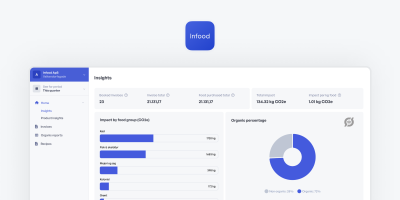
Infood is a platform for automatically calculating the climate footprint, organic accounting and nutritional composition of food purchases for hotels, restaurants, canteens and cafes. Infood automatically interprets the customer's purchase invoices and enriches the customer's purchase data and links them, among other things to the results in The Big Climate Database, so that the work with categorizations, calculations and data transparency becomes much easier. Data is accessed in a clear, graphical and easy-to-use format.
